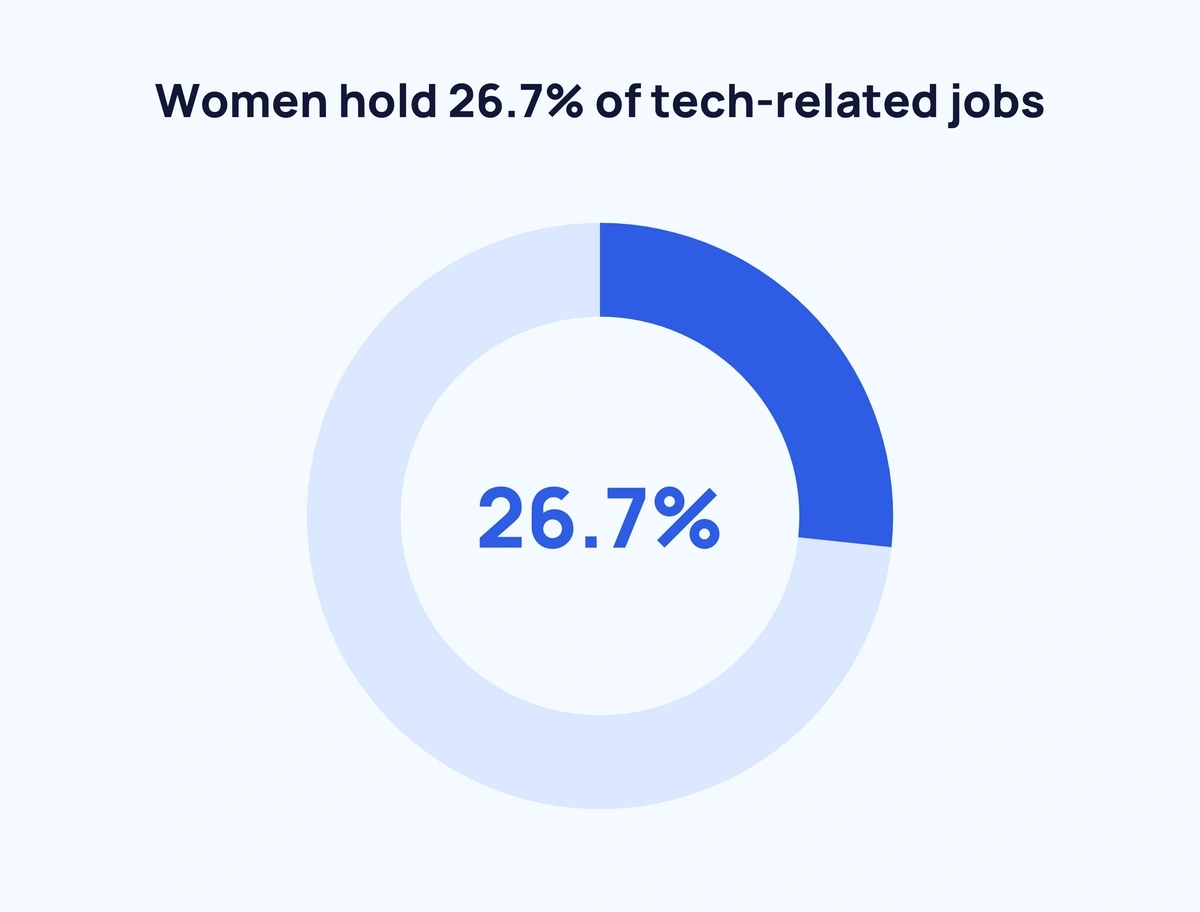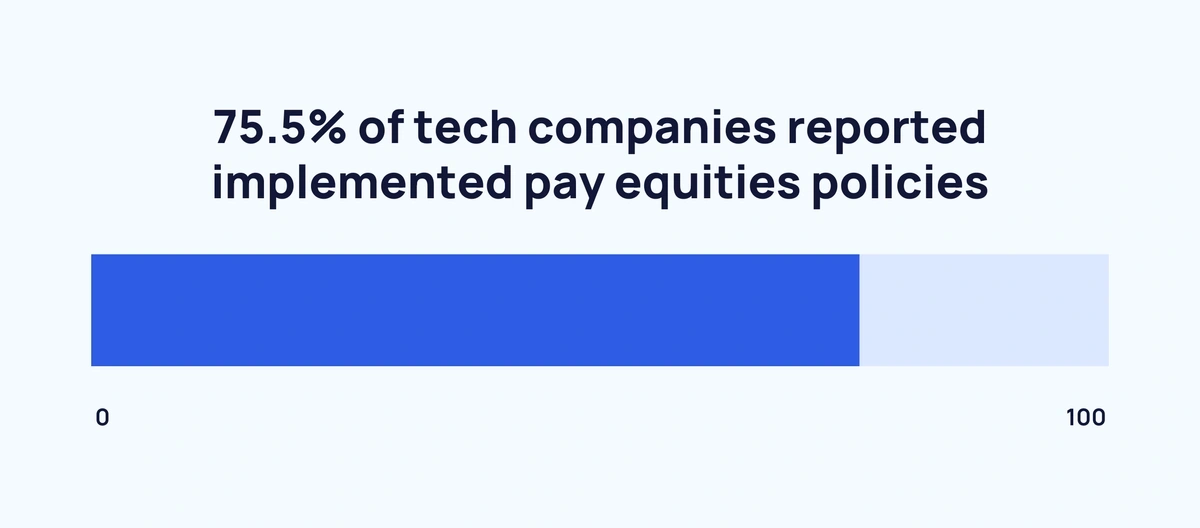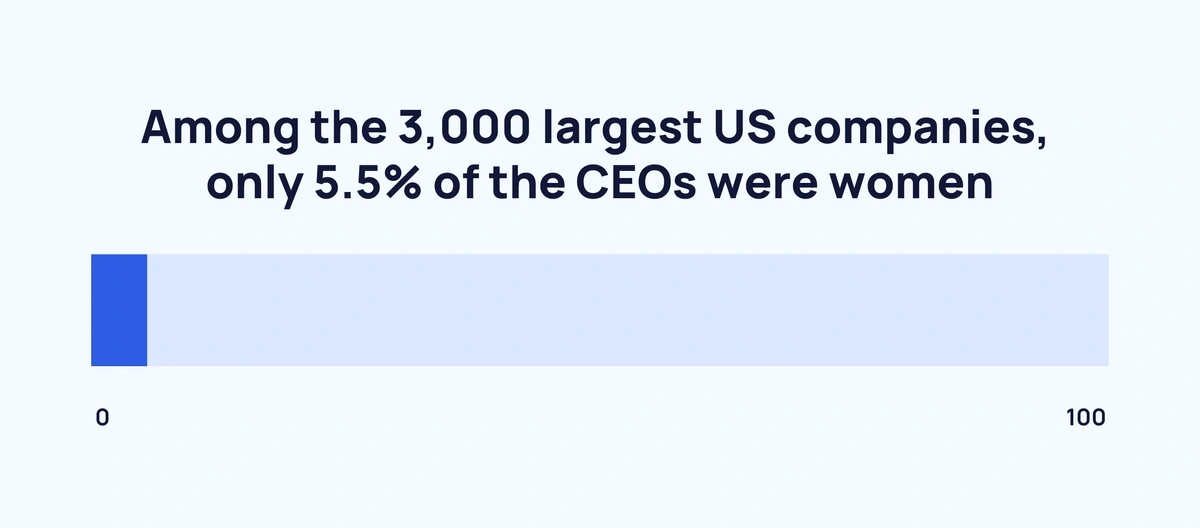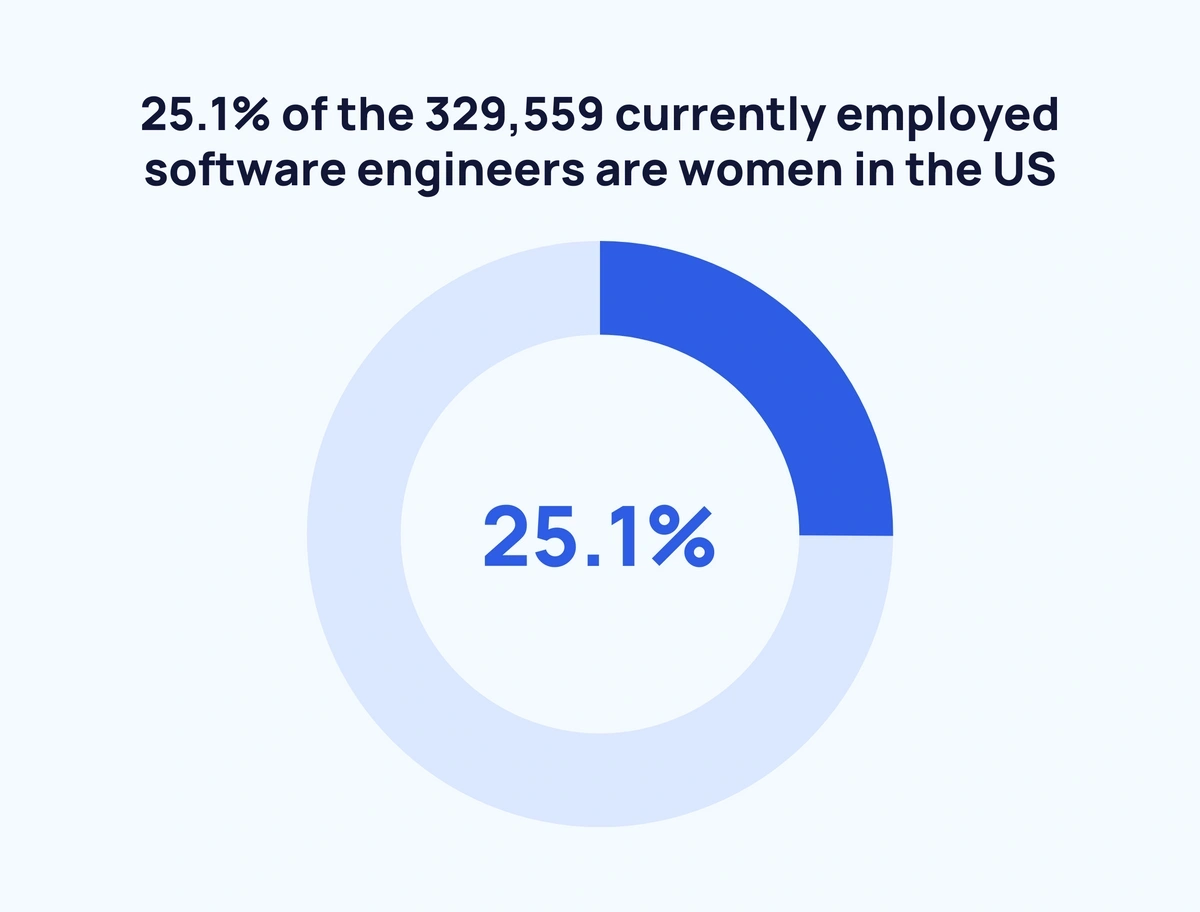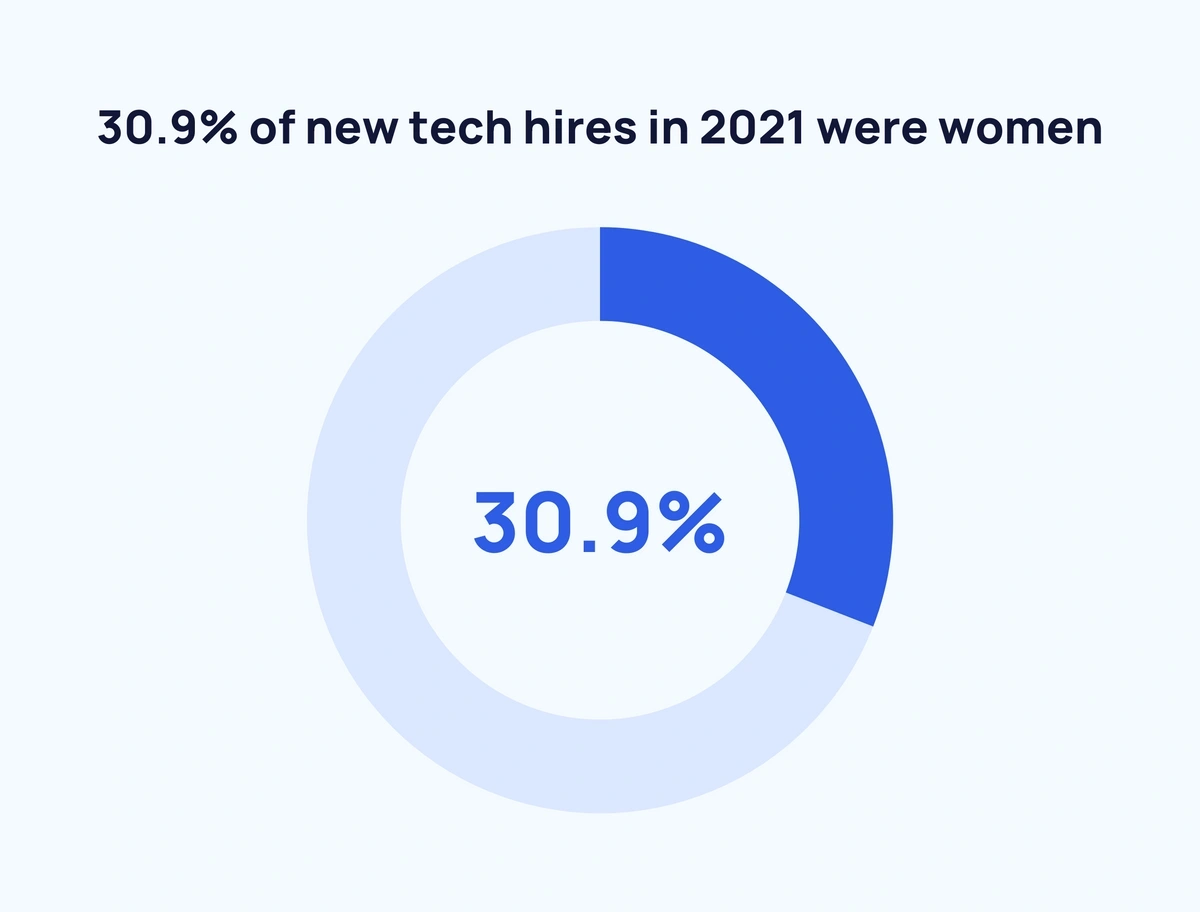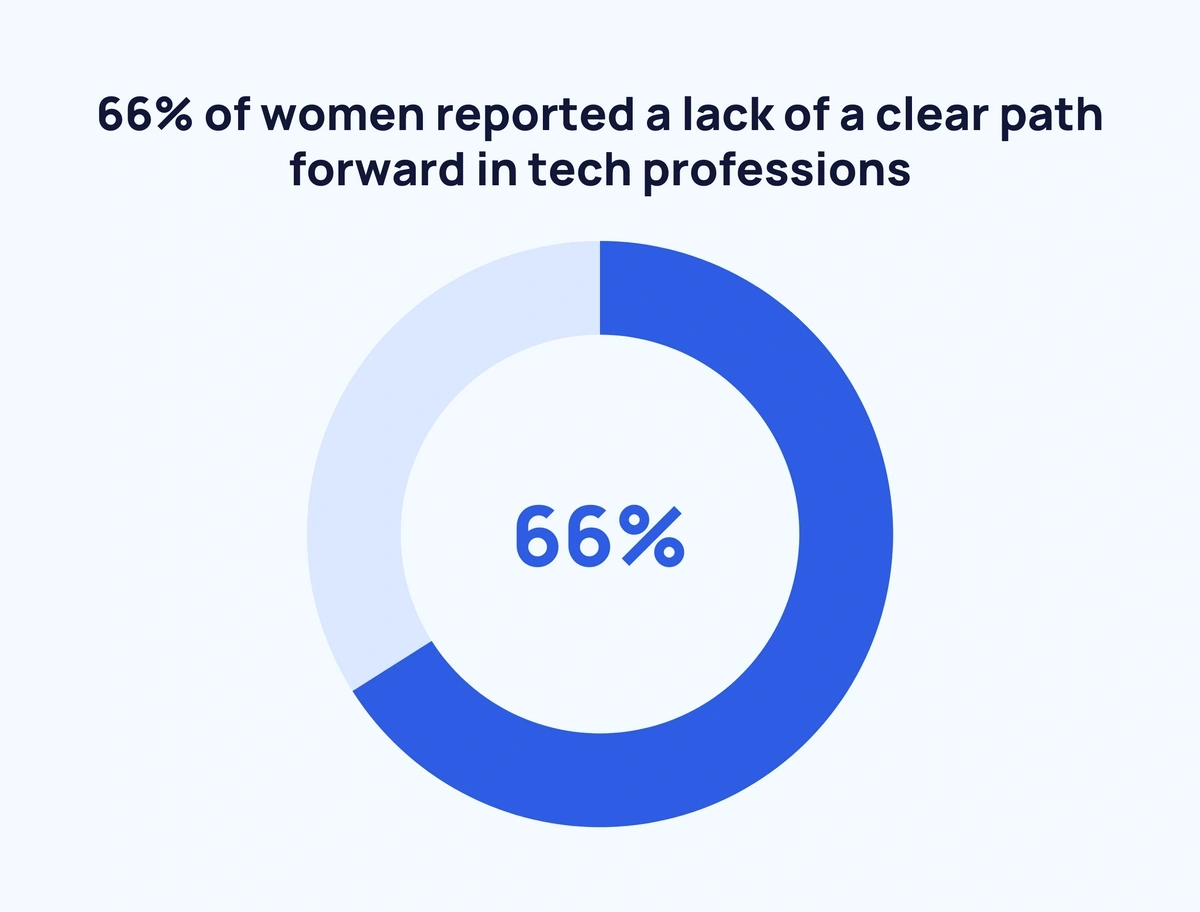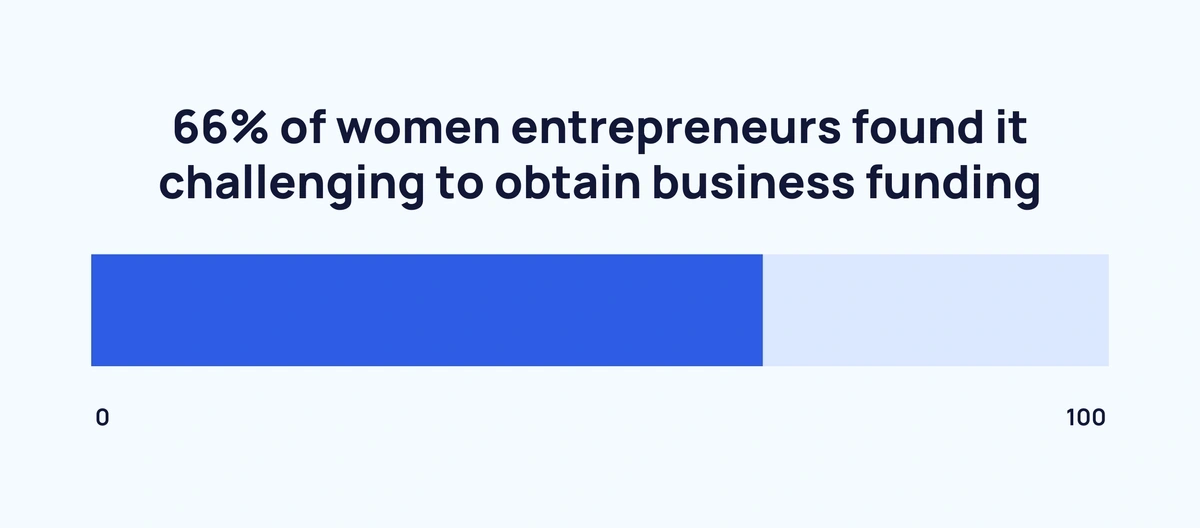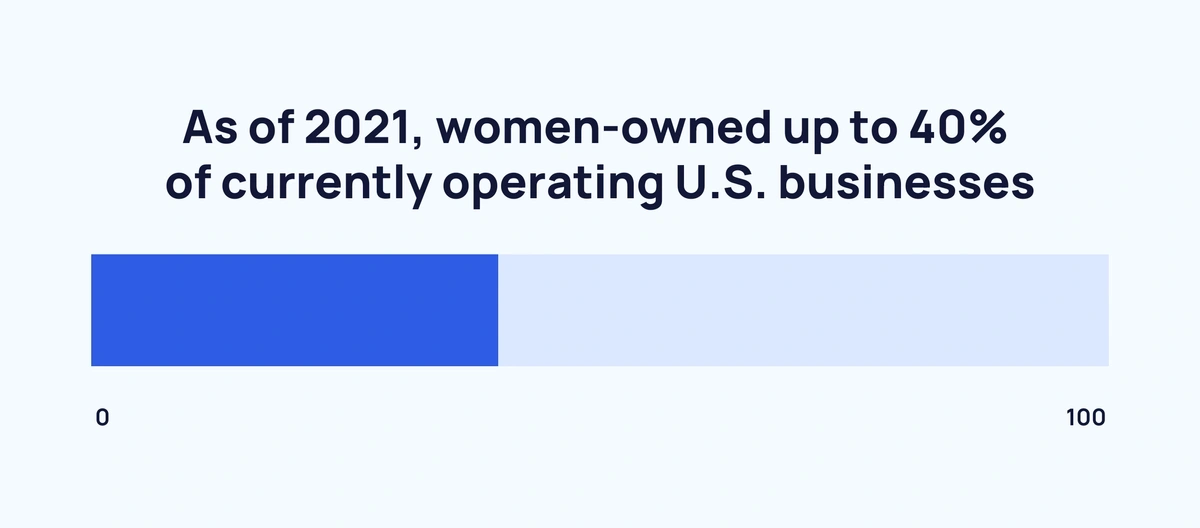
70+ Women In Technology Statistics (2025)
It's no secret that women and several minority groups are underrepresented in the business world.
(To illustrate this, there are currently only two Black female CEOs of Fortune 500 Companies.)
And this is especially true in the tech space.
Even with our advances in bias awareness and gender equality training in the workplace, women still represent a small fraction of the technology workforce.
In this new report, we'll cover the current state of women's representation in the tech industry.
Build a winning strategy
Get a complete view of your competitors to anticipate trends and lead your market
Women in Tech Statistics - Editor's Choice
- Women currently hold only 26.7% of tech-related jobs.
- Tech firms with more than 10,000 employees report women's representation at 26.2%.
- The percentage of women in all tech-related careers has actually decreased over the last 2 years.
- 18% fewer women than men work in tech
- Women in tech earn 0.84 cents for every dollar their male counterparts earn.
- Women in software development report a lack of equal pay, making 0.83 cents for every dollar that men in the field make.
- From 2018-2023, women made up only 35% of STEM graduates, a number that has been stagnant for over a decade.
- Despite equal access, the percentage of women pursuing STEM subjects in higher education is on the decline, and women achieve just 20% of new computer science degrees.
- Companies that implement voluntary gender equality training for recruitment practices, hire fewer women than companies that implement mandatory training.
- 72% of women report experiencing "bro culture" at work, indicating that they are experiencing gender-based discrimination and bias.
- In prior years, women have received as little as 2% of all investment funds in a given year and receive far less global venture capital funding than men.
What Percentage of Women Work in Tech?
As of 2025, women hold about 27% of technology jobs. Notably, compared to entry-level roles, roles higher up in the org chart (like CTOs or heads of engineering) have even lower representation of women.
Taking a closer look, the most recent figures show that of the 141,038 women who work in the tech industry, 56% or 79,163 are women of color. Mid-size tech-sector companies led the way in promoting workplace diversity, boasting more than 53% of the industry's leading employers.
6 tech companies have achieved representational parity (equal pay, representation, and opportunity) in the workplace, setting an example for other technology companies.
Key Statistics:
- As per the latest data, women hold just 26.7% of tech-related jobs.
- The total number of women in tech-related positions has actually decreased by 2.1% over the last few years.
- Of a sample of 552,751 tech employees across 56 companies, 141,038 employees are women.
- Of 141,038 women in technology-related jobs, 79,163 (56%) are women of color.
- Mid-size technology companies make up 53% of the industry's leading employers of women.
- Six tech companies have representational parity in at least one career level.
Sources: Jump to the source list
Women's Representation in Big Tech
In a recent survey, industry employers report representation of women within their labor force as generally in line with the industry average of 26%. Still, the total representation of women in big tech jobs decreased by 2.1% between 2020 and 2022, with smaller tech companies receiving the most significant decrease at 5.1%.
In 2024, 18% fewer women worked in tech than men.
Most technology companies promote unbiased hiring, training, and promotional practices and offer parental leave for new parents. Big tech firms tend to fall behind mid-sized technology companies, with mid-sized companies making up more than half of the top-ranking companies list.
Key Statistics:
- Women's representation in tech companies with more than 10,000 workers stands at 26.2%
- Representation of women in big tech fell by 2.1% between 2020 and 2022
- 83.6% of technology companies operate with unbiased hiring and training practices
- Over three-quarters of tech companies (75.5%) have established pay equity policies in the workplace
- At the internship career level, women make up 39% of the tech industry workforce.
- Women hold 32.8% of entry-level positions in computer science-related jobs.
- Just 10.9% of those holding CEO or senior leadership roles are women.
- The industry standard for the percentage of women employed in tech career positions is 26%.
Sources: Jump to the source list
Percentage of Women in the Workforce
Globally, women account for 42% of the workforce as of 2025.
The latest Bureau of Labor Statistics shows that 57.4% of women participated in the workforce that year in the US. Even though that number increased from 57.1% in the previous year, it was still 2.6% below 1999’s peak of 60.0%.
When comparing these Bureau statistics, men who participated in the workforce was 69.2% in 2019, and this was 17.4% below the peak of 86.6% back in 1948.
Key Statistics:
- Globally, women account for 47.7% of the global workforce.
- 57.4% of all women in the US participate in the workforce, with women holding 50.4% of all jobs.
- 50.2% of the college-educated workforce in the US are women.
- Canada has the highest representation of women in the workforce, at 61.3%.
- 69.8% of women polled worldwide said that they would prefer to work at paid jobs, higher than the 66.5% of men who replied that they would prefer women at paid jobs.
Sources: Jump to the source list
Men vs. Women CEO Statistics
The representation of women in C-suite positions decreased to only 10% during the pandemic. In fact, only around 5% of large company CEOs are women.
The percentage of women in C-suite roles at Fortune 500 companies increased overall but stalled in growth, with just two Black women CEOs. Black women CEOs, overall, are paid an average of 38% less than White men in CEO positions.
Key Statistics:
- Just 10% of those in C-suite professional roles are women.
- Since 2019, the representation of women in senior vice president roles has decreased from 18% to 13%.
- Black women CEOs receive up to 38% less pay than their White male coworkers and counterparts.
- 2 Black women are Fortune 500 CEOs.
- Just 5.5% of the 3,000 biggest American firms have female CEOs.
- CEOs of women-led startups make 0.89 cents for every dollar that male tech CEOs make.
- In 2021, CEOs who were women took an industry pay cut at an average of 27%, while CEOs who were men saw their salaries increase by 1%.
Sources: Jump to the source list
What Percentage of Software Engineers Are Women?
25.1% of the 329,559 currently employed software engineers in the US are women. Though the overall percentage of women with software engineering positions has been rising, women still only hold about a quarter of software engineering jobs.
The current average salary for software engineers is $86,157, with female software engineers making 0.93 cents per every dollar earned by male coworkers. The predominant race among both male and female software engineers is White, at 52.3%.
Key Statistics:
- Of the 329,559 software engineers employed in the United States (according to the latest 2021 data), 25.1% are women.
- As in other tech industry fields, the predominant race among both men and women workers is White at 52.3%.
- The average annual salary for software engineers is $86,157.
- Women software engineers make 0.93 cents to every dollar earned by a male software engineer.
- Women hold 1 in 5 of the senior software engineering positions available.
- Up to 33% of the current software engineering workforce are Asian or Asian American.
Sources: Jump to the source list
What Percentage Of Computer Science Majors Are Women?
Only one in four software engineers are women. Though trends indicate potential job growth in computer science roles, the percentage of women receiving new computer science degrees is 20%. While this number is up 2% over the past few years, it has declined from 37% in 1985.
Computer science boasts a smaller gender pay gap than other tech fields, with women making up to 94 cents of every dollar their male counterparts earn. Women of color are in the bottom percentages in other tech industry sectors, with just 6.3% of degree holders being Black or Hispanic.
Key Statistics:
- The Bureau of Labor Statistics projects a growth of up to 19% in computer science jobs between now and 2026.
- Despite potential job growth in the field, the pursuit of computer science degrees by women is on the decline.
- Computer science has a smaller gender pay gap than other tech groups, with employees who are women earning 94% of what men in the same field make.
- Black and Hispanic women make up the lower tier of computer science degree holders, with just 6.3% representation in the field.
- Asian men and women comprise up to 25% of the computer science workforce.
Sources: Jump to the source list
Women in Tech: Hiring Trends
Fortunately, the percentage of women being hired in the tech space does seem to be slightly increasing. Currently, 30.9% of all new tech roles are filled by women candidates (up from 29% a year earlier.)
White employees made up the most significant percentage of new hires in other tech sectors, with 10.9% being White females. Notably, companies utilizing mandatory gender bias training tend to hire more women.
Key Statistics:
- The percentage of new tech industry hires that were women increased from 29.4% in 2020 to 30.9% in 2021.
- White women make up 10.9% of new hires.
- Black, multiracial, Indigenous, Pacific Islander, and Latin women make up the bottom 6% of all tech industry new hires.
- Companies implementing mandatory unbiasing training for the hiring process had a female new hire rate of 34.5%, compared to 28.8% for companies with voluntary training.
Sources: Jump to the source list
Women in Tech: Workplace Trends
Up to 50% of women reported experiencing gender discrimination during the hiring process or at work. This may be a contributing factor to the statistics showing that women are 22% more likely than men to report experiencing “imposter syndrome” in tech and STEM professions.
66% of women state that they see no clear path for advancement or improvement within their tech careers.
Key Statistics:
- 48% of women in tech and STEM jobs report some form of discrimination in the recruitment or hiring process.
- 39% of women view gender bias as a significant barrier to tech job access.
- 66% of women state a lack of a clear path forward in tech professions.
- Black women hold only 3% of all computing jobs.
- Women are 22% more likely than men to report experiencing "imposter syndrome" in tech and STEM professions.
- 50% of women report some form of gender discrimination or sexual harassment in the workplace.
- Acquiring business funding is a challenge get for around two-thirds (66%) of female entrepreneurs.
- Women in tech are twice as likely to be laid off or furloughed as male tech workers
Sources: Jump to the source list
Women in Tech: Entrepreneurial Trends
The latest estimates show that up to 40% of US businesses are owned by women.
64% of all new women-owned companies have been started by Black, Latina, or Asian women.
Despite this trend, however, women still received far fewer investment and funding opportunities to start or grow their businesses. In fact, certain data suggests that women receive only 2% of invested funds in a given year.
More women in C-suite and senior leadership positions in tech reported burnout conditions, with 57% of women in STEM fields suffering from the condition.
Key Statistics:
- Women own around 40% of all US businesses.
- 64% of all new women-owned businesses have female founders of color.
- Latina women-owned companies grew more than 87% since the pandemic.
- 66% of women entrepreneurs find it challenging to obtain business funding.
- Women-led businesses comprise only 4.9% of all venture capital deals.
- More women CEOs and women in executive-level positions experience burnout, with 57% of women in tech reporting the condition.
- Women entrepreneurs ask for roughly $35,000 lower salaries than male entrepreneurs.
- Women receive almost $5,000 less in loans on average than applicants who are men.
Sources: Jump to the source list
Women in Tech: COVID-19 & Remote Work
COVID-19 significantly impacted workplace policy, hiring practices, and employee retention. In response to pandemic conditions, 16.7% of tech workplace employers implemented a flex or remote work policy, bringing the total percentage of companies offering flextime to 94.4%.
More working mothers exited the workforce in response to the pandemic than men. In fact, women comprised more than 75% of the 1.2 million parents who left the workforce during the pandemic. However, both women and men indicated they would seek another job if their current role required them to return to in-office work.
Key Statistics:
- 16.7% of workplaces enacted a permanent remote work policy in response to COVID-19.
- In 2020, more than 1.2 million parents exited the workforce, with working mothers making up around 75% of that figure.
- 54% of women surveyed report that pandemic conditions made it challenging to stay employed in tech positions.
- 42% of women vs. 35% of men reported burnout largely due to working during the pandemic.
Sources: Jump to the source list
Overall Hiring, Retention, and Advancement
Companies with active gender diversity and gender equality policies report hiring women at higher rates than companies without active policies.
Key Statistics:
- Companies that actively balance their male-to-female ratio of employees' pay rates and advancement opportunities employ women at significantly higher rates.
- 30.9% of new tech hires are women.
- 11.3% of women in the tech and STEM spaces left the field last year.
- 16.9% of women in tech reported receiving a promotion or advancement from their current employer.
- Tech companies performing pay audits reported hiring women at 1.3x the rate of companies without structured pay audits.
- 57% of women surveyed said they felt more burned out at work since COVID-19, compared to only 36% of men surveyed.
Sources: Jump to the source list
Conclusion
In conclusion, the representation of women in the technology industry remains low.
Fortunately, data does show what can be done to help solve this issue. The latest studies and surveys indicate that companies practicing pay equity reviews, unbiased hiring practices, and skill-based promotions tend to hire and retain female talent at a higher rate.
If you found these women in tech stats interesting, take a look at our articles on the 13 top technology trends and 9 key business trends.
Sources:
- Statista
- Builtin
- CNBC
- TechJury
- ISE Mag
- Tech Target
- CIO
- Women Tech
- AnitaB
- McKinsey and Company
- SpaceLift
- AIPRM
- Keevee
- Narrow the Gap
- World Education Blog
- WomenTech Network
About the Author: Jessica Hubbert is a scriptwriter and content consultant who works with organizations to develop informative and engaging content discussing topics ranging from social justice, DEI, and business.
Stop Guessing, Start Growing 🚀
Use real-time topic data to create content that resonates and brings results.
Exploding Topics is owned by Semrush. Our mission is to provide accurate data and expert insights on emerging trends. Unless otherwise noted, this page’s content was written by either an employee or a paid contractor of Semrush Inc.
Share
Newsletter Signup
By clicking “Subscribe” you agree to Semrush Privacy Policy and consent to Semrush using your contact data for newsletter purposes
Written By


Jessica is an experienced freelance SEO copywriter and researcher based in Slidell, Louisiana in the United States.... Read more

